
I had gotten into a solid prone position, in the pale sun of an eastern Oregon summer morning, and got the wind call from the spotter. It was almost everything I had on the reticle, and still, the shot blew off the leeward side of the target. I could see the impact, as the 3 ½ second time of flight gave me an opportunity to deal with the recoil and get back on target. In spite of the desert winds gusting over 18 mph, some of us were making contact with the plate, at 1,760 yards – one full mile – with a 6.5 Creedmoor.
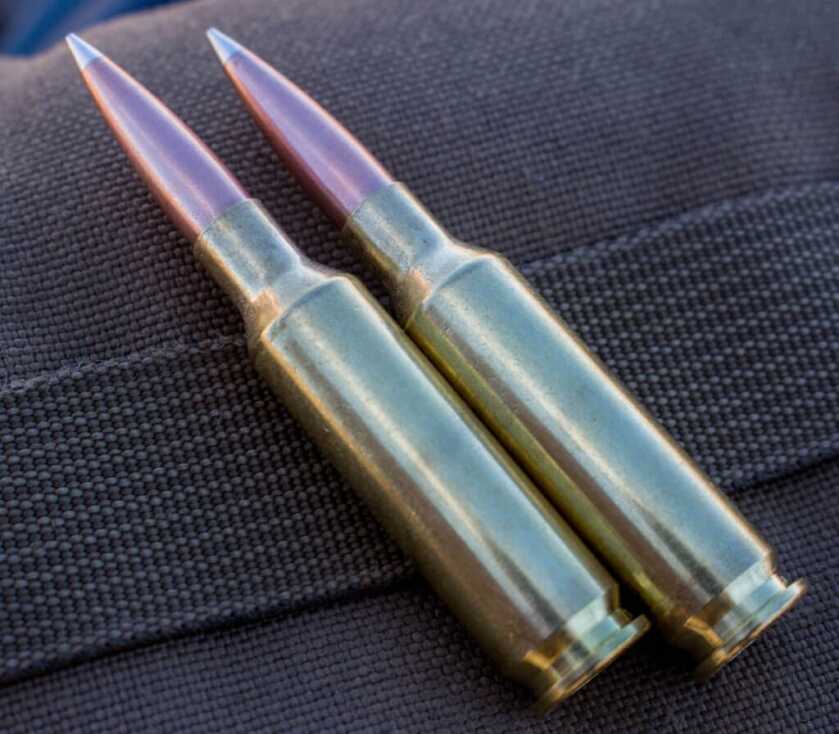
If by now you haven’t heard some gun writer singing the praises of the 6.5 Creedmoor, and extolling its long-range capability, you’re either living off the grid (and therefore not reading this) or rifles just don’t excite you. The Creedmoor actually just floated around for a few years after its release before the meteoric rise to stardom, competing with several other 6.5mm cartridges, some with over a century of field experience. The .260 Remington had a bit of a following, and still makes a good cartridge, and the 6.5×55 Swede is most definitely an excellent design. I am a huge fan of the 6.5-284 Norma – for both the target range as well as the hunting fields- and there are many who appreciate the old .264 Winchester Magnum. I would attribute the popularity of the Creedmoor to a combination of the ability to hold the longest 6.5mm bullets – with the sleek ogives –within the confines of the short-action magazine (the .260 Remington, with a case that is just a bit longer, has trouble with some of the longer bullets) and the fact that it represents a wonderful blend of downrange performance and lack of recoil.
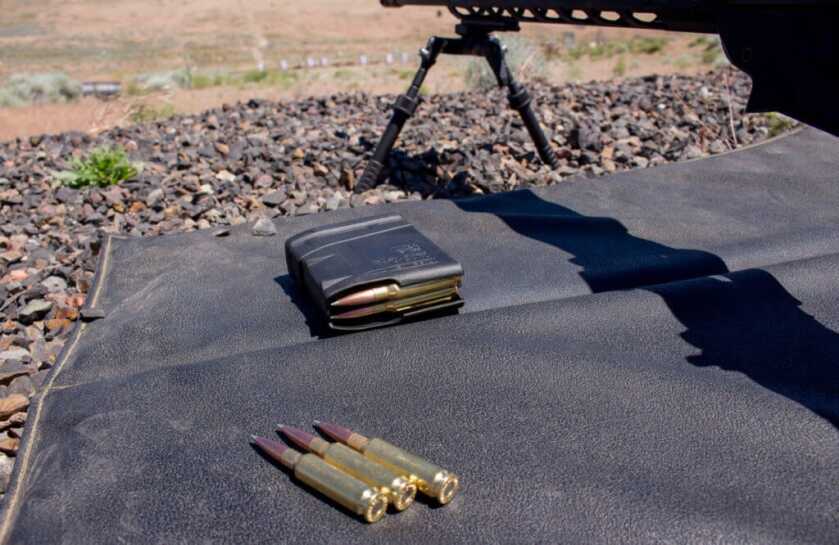
Nonetheless, the guys at Hornady developed the 6.5 Creedmoor, and in spite of a lukewarm reception, the cartridge caught on among long-range shooters. Partly due to marketing, and partly due to excellent field performance, the Creedmoor has shown the world that it makes connecting with 1,000-yard targets much easier than it was when everyone was shooting the .308 Winchester. The twist rate of the 6.5mm rifles gives them the ability to stabilize bullets of high Ballistic Coefficient, which is a huge part of the formula. Velocity, while certainly an important factor, doesn’t matter as much as B.C. does, as it is the retained energy and form of the bullet which will make the difference downrange.
It used to be that hitting a target routinely at 1,000 yards was something shooters only read about; here in the Northeast any shot over 250 yards was considered impossibly long when I was growing up, and 1,000 seemed like a fairy tale. Western shooters may be more familiar with shooting at long distances – primarily due to the open spaces and opportunity to shoot the longer distances – but thirty-five years ago the opportunity to shoot at four figures didn’t exist where I live. No matter, the long-range lifestyle is here to stay, and while some people still become pale over the concept of shooting 1,000 yards, others look at it like a chip-shot and don’t get serious until much further. It was while at the Leupold Optics Academy in eastern Oregon that we got to take the Creedmoor out to the one-mile mark, and the results had me thinking about just what this cartridge is and what it can be when loaded with certain bullets in certain environmental conditions.
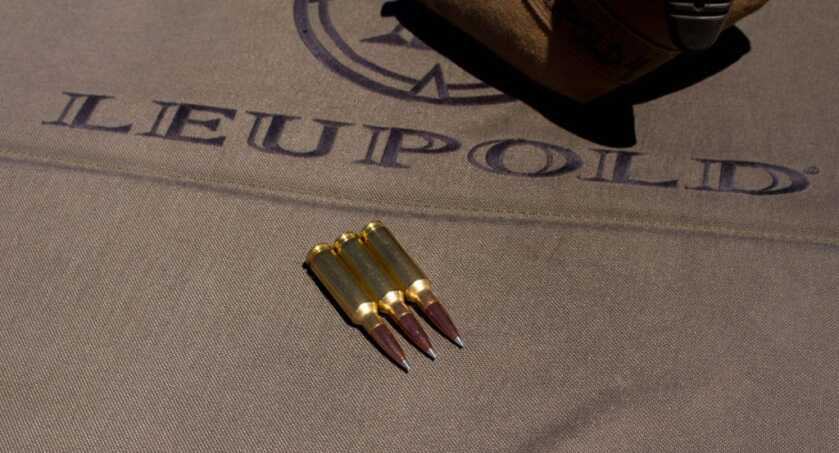
At the Leupold event, we were using Ruger Precision Rifles in 6.5 Creedmoor, topped with Leupold Mark 5 7-35×56 scopes, shooting the new Hornady 135-grain A-Tip bullets, handloaded to a muzzle velocity of 2,770 fps (at least in my rifle). While the goal was to test the gear – and I will happily report that the Leupold Mark 5 series of scopes is absolutely amazing – it was the new Hornady bullet and the way it flew that impressed me most. The A-Tip is Hornady’s newest design, and as Hornady puts it: “It is… Rocket Science.”
Using an aluminum tip in lieu of the multitude of polymer tips on the market, the Hornady A-Tip is designed for long-range performance from the ground up. Hornady has refined the design of their AMP jacket for the A-Tip, and that aluminum tip not only provides a more consistent shape, but it also is longer and changes the center of gravity, helping to maintain in-flight stability. These bullets are available in component form only. When you buy a box of 100 Hornady A-Tip bullets, they come sequentially packaged as they come off the press, they are so fresh the lubricant isn’t even cleaned off the bullets, and a cleaning rag is provided to do so.
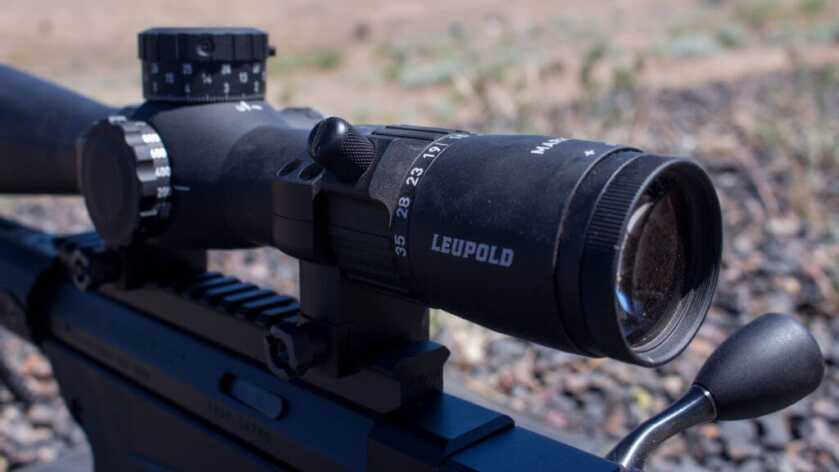
Hornady balances the bearing surface, ogive, and boat tail dimensions to the caliber and weight of each bullet. They are available in 6mm at 110 grains, in 6.5mm at 135 and 153 grains, and in .30 caliber at 230 and 250 grains and that 135-grain 6.5mm bullet goes together with the Creedmoor case just perfectly. Hornady does list the G1 and G7 Ballistic Coefficient for these bullets, but one of the other focal points of this school was using the Hornady 4DOF, or 4 Degrees of Freedom, ballistic calculator.
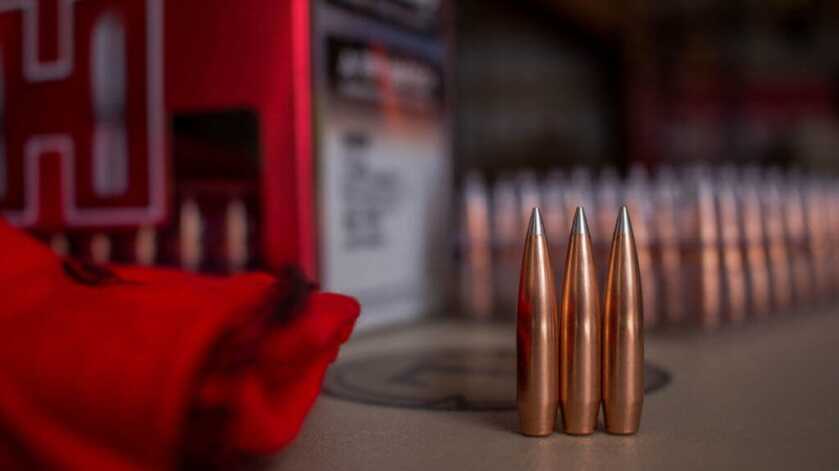
The gist of the 4DOF program is that it uses an axial form factor of a particular bullet, adjusted by muzzle velocity and atmospheric conditions, to give a better representation and projection of the trajectory curve. While the Ballistic Coefficient is a decent measure of a bullet’s ability to slip through the atmosphere, it is a generalization at best, representing an average of both velocities and atmospheric conditions. Sierra has long given varying B.C. values for their bullets, based on the velocity. Hornady has taken the idea much further, and instead of relying on a static B.C. value, has used verified Doppler radar data to project a trajectory curve, and tweaked their program to give a very accurate result. (If you have a smartphone the Hornady 4DOF program is available for free in your app store and is an excellent ballistic calculator)

PC: Dangersoup.com
Back to the one-mile idea, I was looking at the data on the Hornady 4DOF program we arrived at, including the environmental data for the shooting range. One mile equates to 1,760 yards, and in order to have the best results, you’ll want your bullet to remain supersonic, having a velocity of roughly 1,125 fps or more. Once a bullet drops below that velocity, it enters what is known as the transonic window, and it isn’t difficult for your bullet to come out of stabile flight. The Creedmoor case – based on the relatively unknown and certainly unloved .30 T/C – doesn’t have a whole bunch of case capacity, but it has enough for most of the long-range scenarios a shooter will encounter.
With that muzzle velocity of 2,770 fps, my rifle would maintain supersonic flight at a mile with the 135-grain Hornady A-Tip, but only in the right set of environmental conditions. At 73 degrees Fahrenheit, in low humidity, at an elevation of just over 2,000 feet above sea level, my bullet goes subsonic 100 yards shy of the one-mile mark. Change that elevation to 5,000 feet, and it’ll stay supersonic until 100 yards past the one-mile mark. Bump up the humidity and/or air temperature and the cartridge becomes even better. Quite obviously, a bigger case like the 6.5-284 Norma or the 6.5 PRC will attain higher muzzle velocities, keeping that 135-grain A-Tip supersonic to nearly 1,900 yards, but the Creedmoor is much easier on the shoulder and the rifle as well.

Throughout the course of the week, we took that 135-grain A-Tip to task by participating in some shooter/spotter drills where we would change up targets according to the instructor’s choice. The spotter would receive the target information, range the target, give the shooter the elevation adjustment as calculated on the Hornady 4DOF program, and make the wind call. The shooter would dial for elevation, and hold on the Leupold reticle for wind, and the results of the endeavor made me quite confident in the performance of the A-Tip, at ranges out to 1,500 yards (we had to use a special range configuration to get one mile), in spite of the constant windy conditions. When the wind would stay consistent, we saw very impressive groups on the steel – I put three within a two-inch circle at 575 yards – and with confident wind calls we were center-punching the small plates out to 1,000, and making solid hits to 1,500. Hornady has a wonderful design with the A-Tip, and I’m looking forward to trying the remainder of the product line.
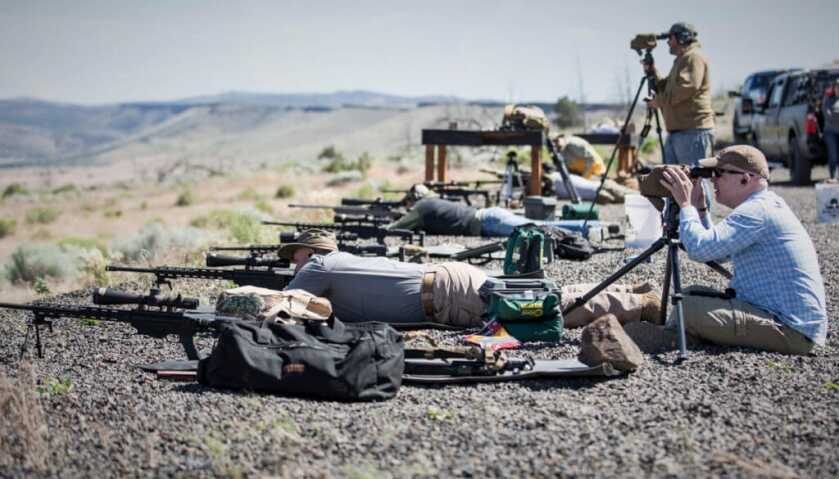
PC: Dangersoup.com
If I had to pick a bullet to deal with the transonic window, I’d be hard-pressed to choose a better design than Hornady’s A-Tip; there are certainly many good designs on the market, but this bullet engenders a lot of confidence. In the 135-grain weight, it complements the Creedmoor case very well, and I look forward to the opportunity to send them toward one-mile steel again; perhaps the wind will be kind and calm down next time.
If shooting one-mile targets (or longer) is a serious goal for you, I feel you may need to look to a faster cartridge for the best results under a variety of environmental conditions, as the Creedmoor will struggle at times. If you spend most of your time at higher elevations in warm air, you’ll fair well. I must say that in spite of the Hornady A-Tip bullet going transonic, it handled the rough air very well. I did struggle in that gusting Oregon wind and didn’t disturb the fancy paint job on the target, though some did – including GA’s own True Pearce. The Leupold Mark 5 – in spite of the 35mm main tube – did run out of elevation before one mile, so we were forced to use the holdover on the reticle to make it happen. Should you want to take your Creedmoor to a mile, I’d definitely recommend a 20-MOA base to help your cause; it’ll save you a lot of struggling along the way, no matter how big your riflescope.
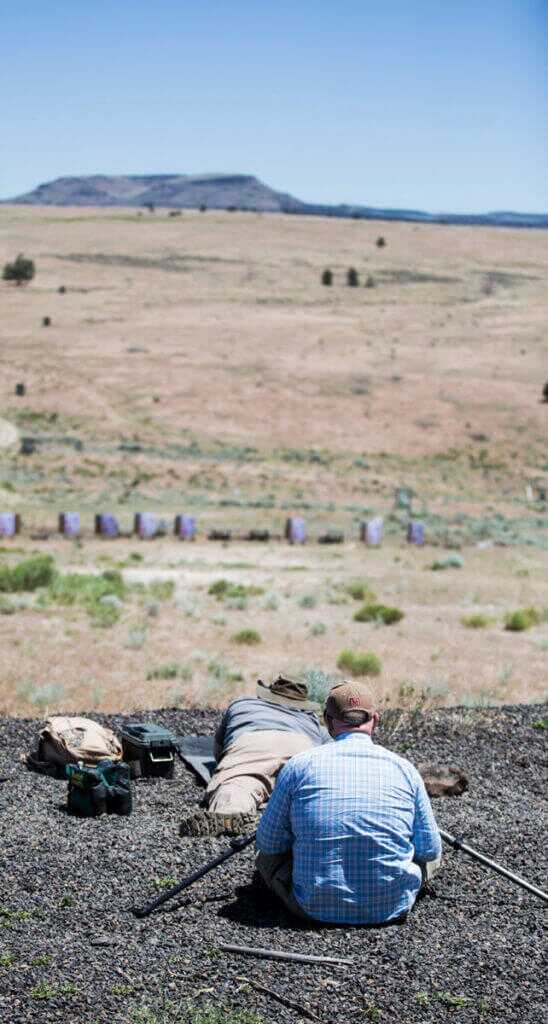
Learn more about the Hornady A-Tip HERE
Learn more about the Leupold Mark 5 HERE

I think and is just my opinion that most of these so called “upgrades” to billets are just companies using us shooters as giny pigs to buy and test their own products for them. Fact is if we don’t like them/buy them then of course they wouldn’t keep making any of these trial and error rounds that hit market. Yeah, they do some shooting of the rounds, but in no way possible all the guns that all of America own. So those guns they don’t use and we as shooters do start to show the weaknesses in a particular round with different guns. And someone mentioned about wanting to just out right but them and some other person said there’s no real market for it since they are trying to sell to reloaders. That guys point is very much moot since obviously there is a demand for non reloaders since the guy asked if he could buy them out right! Fact is not all people are rich or in reality dumb enough to invest thousands into a legit loading setup as the cheap little $250 Hornady kits and others don’t at all have what you truly NEED to load rounds. And then you need to buy specific conponets for EACH caliber and it’s simply not at all worth it in the end. If you actually did the match on what it costs for even the cheapest rounds to reload, cases, primers, projectiles that damn near cost as much as a completed round, haz mat fees, and on and on plus a lot of time pulling old primers, resizing cases that either you buy or are the LOSER that’s at the range LITERALY NO JOKE picking up MY casings from BETWEEN MY LEGS AND FEET WHILE I’m shooting! And funny the same guy who said there no demand for a completed round said there not for hunting or plinking which is truly hilarious to me! If someone feels like spending ridiculous prices and buy the best rounds to go plinking with, guess what, that’s their choice and trust me in the gun industry there’s more money than sense that’s for sure with zero doubt. Most people don’t even clean there guns ever! And to say it’s not a hunting round and is only good to do what he said it’s not for which IS PLINKING just at a long range… Seems like he’s very contradictory to his own comments! If you shoot at a target 25 yards away with a GLOCK or 1,500 yards away with a rifle your still shooting a static target… How’d it any different other than the distance and the extreme extra money you spent on each billet AND THEN EVERY OTHER component including a full and truly complete set that will zero doubt cost multiple thousands if you want to load more than a round every few minutes! And to say there’s no demand for a precision long range already completed round is just a plain stupid thing to say when they make GOLF BALL AND SODA CAN LAUNCHERS! Tell me ONE SINGLE NON MORON need for a TOY like that YET there’s still a pretty big market for these COMPLETELY USELESS devices! Ever seen the AR snake or something like that with the two barrels and two separate triggers? Again, not at ALL practical and yet it’s being sold no problem because again there’s people with more money than sense! So just because YOUR OPINION is that there’s no market for it, doesn’t at all make it a right one! Just like mine even though I have logic based arguments and yours wasn’t any good. You mentioned YOU live in a heavily wooded area as do I since I live I the Ocala a National Forest so I get what your saying about the trees. But even in the thickest woods there’s always a clearing some place if you do your job and plan your spit before hunt day. Or this round simply isn’t for YOU! But what about the people that live in the mountains, desert, or just flat lands or even mountains since there’s always lots of clearings? This round would be perfect for them, but you claim there’s no need for an already made bullet. And fact is, most people don’t have the kind of money required to buy the reloading equipment since ANY kit made my anyone is no doubt thousands and thousands of you want the auto measuring scale that feeds the grains or what ever you use instead of using hand tools that take forever since if you add a little to much you have to dump it back or not enough and readd. And the cheap kits you do one round at a time which would take forever and your time HAS to be accounted for in regards to the fact ALL that time and labor could ALL be avoided if they sold the rounds completed. I have done the math and even if you owned or got for free a complete bad a$$ multi bullet system I can find and buy 90% at least of just about any caliber or brand/type of projectile SAME EXACT bullets for LESS than if I bought EACH component and did the work myself that just isn’t as precise as an assembly line that’s built specifically to make bullets and using ALL THE BEST equipment NO civilian can afford for home use. Only benefit if hand loading is you can put less or more powder in. But if your that worried about a bullet going a little or less fast then you better only be in the competition field in which case you’d use ONLY the least amount of powder as possible to get the least amount of recoil for a more accurate long range shot. I don’t really see the benefit of the aluminum tip over the many polymer tipped ones out there since both no doubt would leave a ding or dent on the projectiles tip as it’s being chambered so realistically the polymer tip would probably do better as it’d have less chance of getting damaged as easy when getting slammed into the feed ramp
You sound very bitter, and seem fairly poor at math.
Although the speed of sound is a precise point for a given set of conditions, the transonic range is quite broad. A bullet starts to be affected by transonic buffeting at around Mach 1.3, and it doesn’t stop until around Mach 0.8.
Man I sure am glad someone else picked up on that.
I have a custom built M-70 chambered in 26 Nosler, this past summer some friends and I tried some long range shooting up in the mountains where we could make a range of 1342 yards to test our guns out and once I got dialed in I was able to print three targets of five shots under five inches at that range with Sierra’s 150 g Match King’s so next summer I’m going to try the Hornady A-tips and see how they perform. I’m a big fan of the .264 caliber and have several guns in various 6.5 calibers from the 264 WSSM to the 26 Nosler. One of the guys I shoot with has a 6.5/300 Weatherby and next year we’re going to have a “match race” to see what cartridge has an advantage, if any.
Hornady has been making it for years….the A-Max
My nephew has a rifle chambered in 6.5. It is really great for the target range. However, in our heavily wooded State. There aren’t many long distance hunting shots for dear, and bears. I don’t see a personal need for 6.5 over my trusty, and proven .308 or 7.62×51 NATO. I have taken deer at 300 yards with either cartridge. Ultimately, with all the trees, hill, and depressions around here a longer shot isn’t even conceivable.
White, huh?
WOW…sounds like someone needs to stay off the jack for awhile…….and……maybe an English or spelling class Or 2 might help…….
Well at least he’s not super opinionated or anything………Whew………..
And chunk….I caught that too…………
Don’t you think the same thing could be accomplished with a 30-06 if the same effort was put into it. Obviously with more recoil. By the mid 90s I was doing quite well at 1000 yards sub sonic with the 510 Whisper. Atleast I thought keeping API rounds on the side of a tank turret was decent.
Aluminum tipped bullets is not a new idea. Winchester did it 30 years ago. In handgun calibers and rifle. I still have a box of Winchester Silver Tips 125gr 357 Mag. Not as refinded as todays Hornady’s offering. But been there, done that.
You recommend a 20MOA based which your Ruger Precision Rifle had. That means that even with the added 20MOA the Leupold still didn’t have enough elevation adjustment. Knowing you already had 20MOA, perhaps your suggestion would be a 30MOA base, or perhaps a scope with more elevation.
I might have this wrong but for the 6.5mm 140gr ELDM I calculate needing 25.31 MRAD to reach 1760yds which is well within the capabilities of the Mark 5 7-35×56 mil scope . So when I read the authors statement that he needed a 20moa rail I was surprised. But I might be missing something! So?
This is hot ammo in the 6.5 creedmoore . Get it while you can.
I would like to get one of these!
I watched a 12yo white girl bang steel at 1500 with an old outdated .243 shooting SMK’s I believe. While texting. I was in next lane with 6.5cm I aint got the speed of those older guns.
Nice article. I wonder why Hornady, or any bullet manufacture does not load the aluminum tipped bullet for commercial use? Aluminum can be machined for longer lengths than polymer, which means higher B.C. Must be another reason.
They are specialty bullets for extreme long range shooting which most people who participate in handload their own ammo to their specific rifle and situation. They are not designed for hunting and there is better suited ammo for that. they are expensive for causal shooters and not suitable for plinking, so there is not real retail demand for loaded cartridges of this type, not to mention they have only been on the market for only a few months as just reloading components, and that is their target market.
Can’t wait to see it in .50.